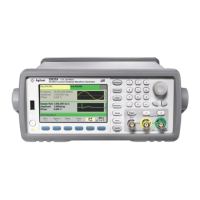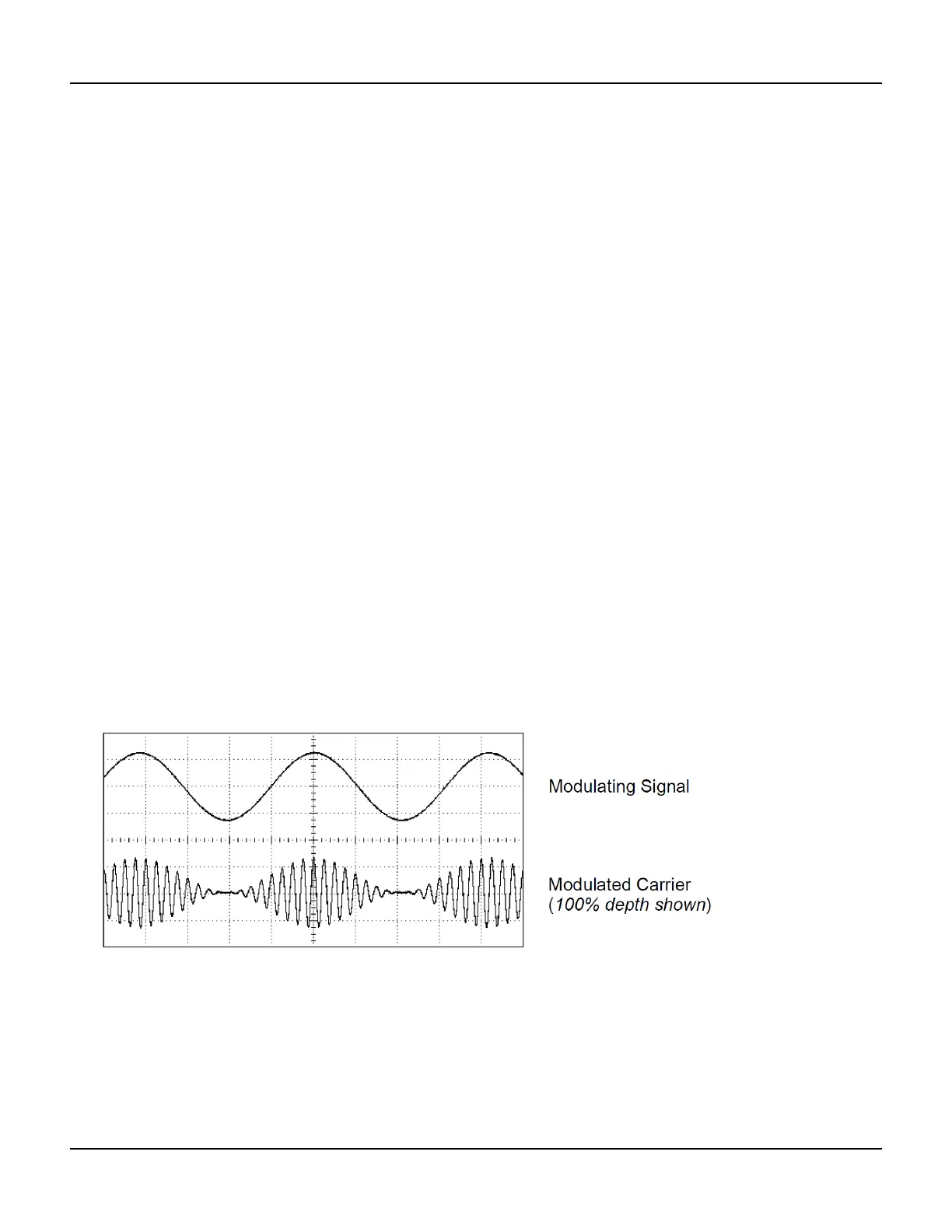Waveform Generation Tutorial
An LFSR is specified by the number of stages it contains and which stages ("taps") feed the exclusive-or (XOR) gates in
its feedback network. The PRBS output is taken from the last stage. With properly chosen taps, an L-stage LFSR
produces a repetitive PRBS of length 2L-1. The clocking frequency of the LFSR determines the "bit rate" of the PRBS.
The instrument allows you to set L to 7, 9, 11, 15, 20, or 23, resulting in sequences from 127 to 8,388,607 bits in
length.
Modulation
Amplitude Modulation (AM)
The instrument implements two forms of AM
l Double-sideband full-carrier (DSB-FC). DSB-FC has an ITU designation of A3E and is the type used in AM broad-
casting.
The equation for DSB-FC is
y(t)= [(1/2)+(1/2)•d•m(t)]•A
c
•sin(ω
c
t)
where
m(t) is the modulating signal
A
c
is the carrier amplitude
ω
c
is the carrier frequency of the carrier
d is the "modulation depth," or fraction of the amplitude range is used by the modulation
For example, a depth setting of 80% varies the amplitude from 10% to 90% of the amplitude setting (90% - 10%
= 80%) with either an internal or a full-scale (±5 V) external modulating signal. You may set depth as high as
120%, as long as you do not exceed the instrument’s maximum output voltage of (±5 V into 50 Ω, ±10 V into
high impedance).
l Double-sideband suppressed-carrier (DSSC). Many modern communications systems employ DSSC on each of two
carriers that have the same frequency but a 90-degree phase difference. This is called quadrature amplitude mod-
ulation (QAM).
The equation for DSSC is y(t)=d•m(t)•sin(ω
c
t)
142 Agilent 33500 Series Operating and Service Guide

